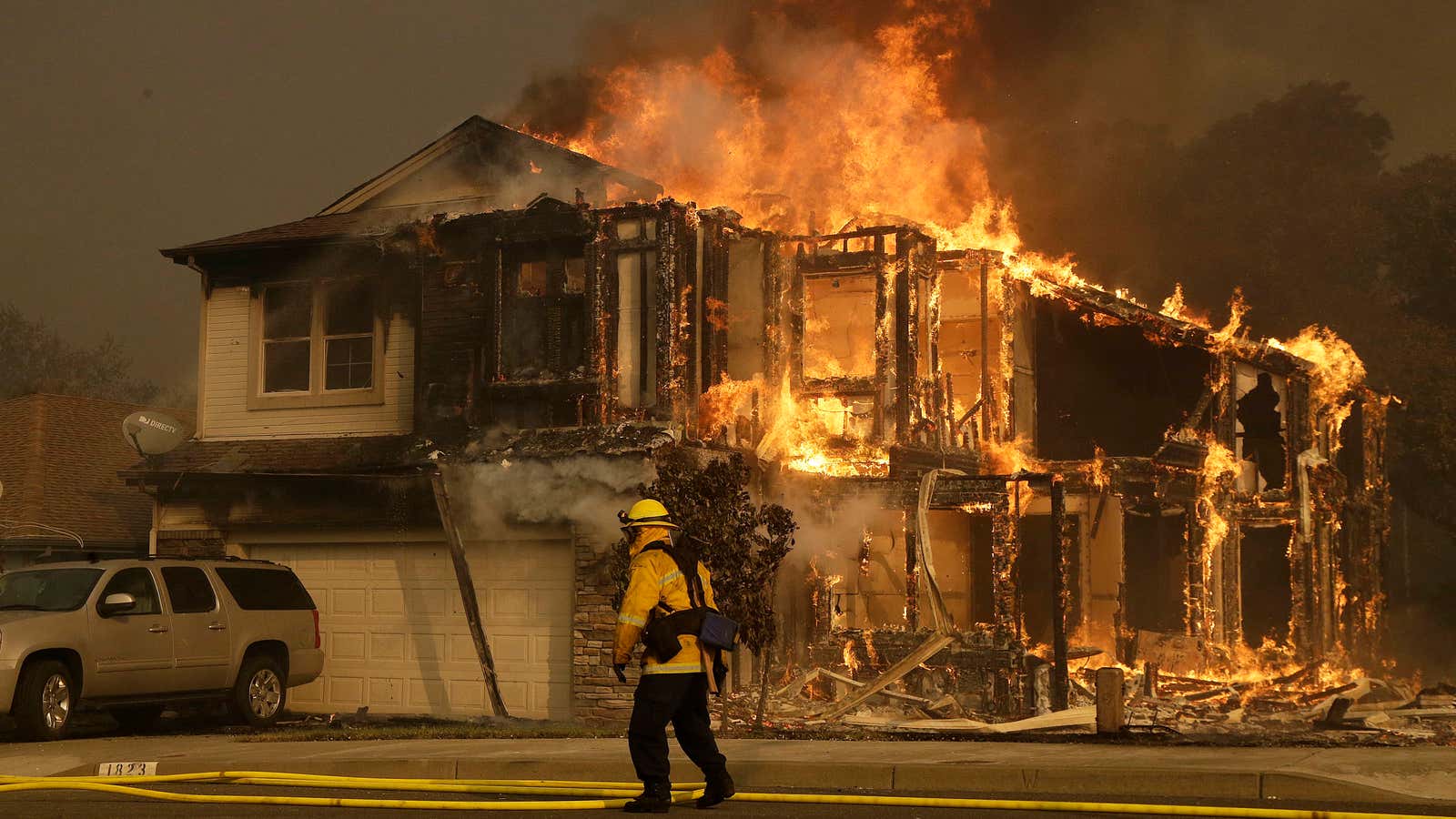The US is suffering one of the most destructive fire seasons in recent history. The predicted cost of the damage already crossed $2 billion—making it the most expensive on record—and that was before the latest wildfire began raging in California’s wine country.
At the time of publication, 10 people had been killed and more than 1,500 buildings damaged. The costliest damages are likely to be in the vineyards of Napa and Sonoma, where replacing a single acre of vine can cost as much as $25,000. A state of emergency has been declared and authorities have warned that bad conditions are likely to last until Tuesday.
It’s the worst month possible for a fire to have started in the Golden State. October is the end of California’s dry season and the most vulnerable time for wildfires to spread. The culprit for this particular wildfire is a weather phenomenon called the “Diablo winds” in Northern California, after Mt. Diablo in the eastern Bay Area. (The same phenomenon is called the “Santa Ana winds” in Southern California, after Mt. Santa Ana.)
These winds are created because of high inland pressure, which pushes air down the sides of mountains. The winds warm up and dry out as they travel downward. Late Sunday night (Oct. 8), these winds reached hurricane levels, traveling at 70 mph (110 km/h). The fire started during the peak of the wind event, according to Jan Null, a meteorologist at San Jose State University and formerly with the National Weather Service.
“It’s just about the worst case weather conditions to spread a wildfire quickly, given the fuel,” climate scientist Daniel Swain of the University of California-Los Angeles told the LA Times. Images from space showed the extent of the fires:
My Quartz colleague reported that he could smell the fire in Oakland, where he lives and which is more than 30 miles south of the the southernmost wildfire.
This could be a harbinger of things to come. According to a 2015 study, thanks to warmer and drier summers driven by global climate change, the downslope winds that led to the current situation are going to become more frequent and are likely to cause fires across even bigger areas in California in the future.
Last month, I spent two weeks in and around the Bay Area, and I was amazed by the sheer range of nature’s beauty on offer: from watching whales in Monterey Bay to hiking in snow near Lake Tahoe. The downside is that Californians have to contend with the threat of an amazing range of nature’s fury.
